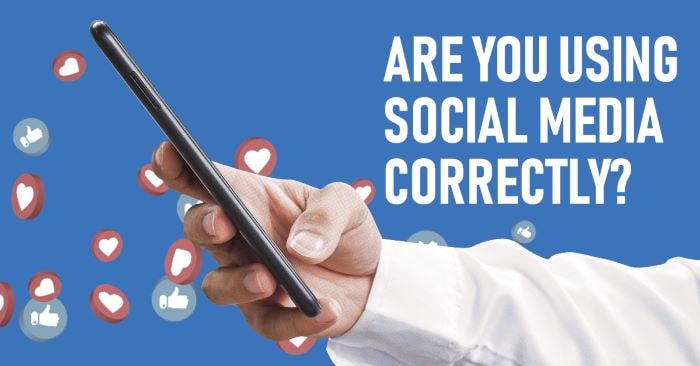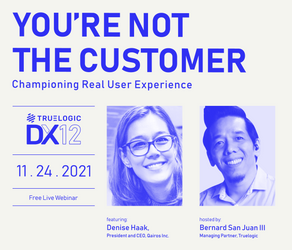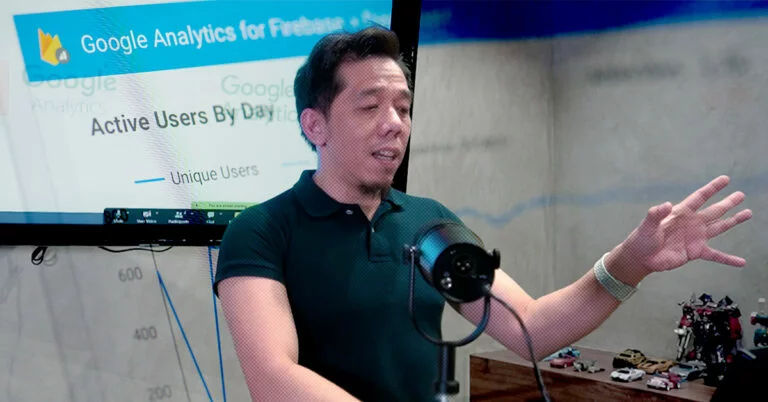Truelogic Episode 23 Recap: Social Media for Brands Part 1

Are you handling your social media correctly? What are your reasons for having social media brand accounts in the first place? How often do you and your social media marketing agency review your social media accounts and campaigns?
In this episode of Truelogic DX podcast, the Truelogic Social Media Team will once again shed light on businesses’ social media practices and how it affects – both positively and negatively – their brand and customers behavior.
Podcast Transcription
Ant Sierra: You guys are listening to the Truelogic DX Podcast. Hijacking this episode for now is the Truelogic Social Media Team.
James Pebenito: We’re here to talk about the best practices of social media. So let’s get started.
Are brands using social media the right way?
Jake Macapagal: Well, it depends. Based on experience, or at least the things that I see on Facebook, there are a lot of brands. Let’s say, Jollibee and Mcdo, they do their social media right, at least on Facebook, but there are also other brands that try to force it onto social media, then it gets awkward results, which is not really efficient.
James Pebenito: Actually, your brand should be on social media because you have to chase your customers. Your customers are there, and if you’re not there, then you’re missing out. But it’s one thing if you have a social media account and you have an online presence, but it’s another to actually engage and resonate with your audience. So yes, you have a brand, but are you actually reaching the right audience? Are you posting? Engaging? Are you driving enough conversions? So these are a few things you have to ask yourself if you want to penetrate your market on social media.
Ant Sierra: Would you agree that when you’re on social media, is it intimate, you build a more personal connection with them?
James Pebenito: I’d say yes, intimate. You’re in their faces like 24/7 if you’re holding your phone.The ads you see are more personalized compared to before.
Jake Macapagal: And it’s more about building a relationship with your audience. I mean, people consume content more often than not these days. It’s how you get them to stay loyal to something that they want to look forward to.
They’re so engaged and they just follow you because they like your content. It’s more about being genuine and it really establishes a solid relationship with the right audience.
Ant Sierra: What can you advise brands when it comes to how to be a little more connected?
Jake Macapagal: In my experience, I think you should always ask yourself what your main objective is. What’s your goal in the campaign for this specific brand? So from there, if you determine your goal, that’s where you can strategize, like what content works for this objective. So, say, for example, your brand is starting out and you want people to like your page to engage with your page. It’s an engagement. So perhaps create content that will spark a conversation with your target audience.
Herr Reyes: I think one of the most important things for someone who handles social media is to create a document that includes all the details of the project. So we call this a lot of different things. We call this a social media playbook, brand guidelines, communication guide, and brand bible. This should contain your objectives, your target audience, your messaging, and the type of content that you want to put out as a brand. So everything that you need, it’s all in the documents because that way you can organize everything.
So you have to keep an eye on things when you become a social media specialist, or at least when you’re handling a social media campaign. You need to have a central document like that, and if there are times that you are unsure or if you have to pass it on to someone else, having that centralized document will solve a lot of your problems.
Ant Sierra: Just to add to that, in creating those types of documents, I think a lot of people can forget that social media is a very fast-paced environment and having a guideline, just the simplest guideline, makes enough difference. If you have to ride on a certain event or a trend or whatever, it will be easy to create one.
Can you guys introduce us to these objectives and what is the relevance now when it comes to the brand on the platform?
Jake Macapagal: So we have the number of followers, engagement rate, and audience size, at least for when you’re setting up ads. And then if you’re selling stuff, the conversion should be your number one objective. These are the common ones that we use.
Herr Reyes: To add to that, when it comes to objectives on social media, Jake already mentioned the different types. These objectives cannot be easily achieved, especially when you are talking about organic. I think the best thing you can do if you want to lead people to certain actions is to run ads. You can, of course, make a call to action. One of the best practices is a call to action.
James Pebenito: When it comes to the virality of your posts, you can’t do it intentionally. You can, but as you know, it rarely happens. You just really have to be genuine about it. You have to be real about your content. And with regard to organic posting, yes, it’s actually hard unless your content is shareable. I highly recommend doing ads. You can control where and who will see them, so it is easy for you to reach the right people for your brand.
Ant Sierra: To add to that, virality isn’t something you can plot out. So I think one of the best things that brands and marketers should know is to always keep in mind that if their goal is to make something viral or to make something trending, they can go either way. They can capitalize on current events, trend jack the hell out of something. Second, create something that is out of this world. Create something that would catch everyone’s attention. Ride a trend or create the trend.
James Pebenito: Be a trendsetter. You can’t force people to like your content.
Ant Sierra: Can you have one or more objectives in a single ad?
James Pebenito: Yeah, definitely. We have plans that have a lot of objectives in them. It depends on where your brand currently sits. So let’s say if you’re a new brand and you’re just starting out, focus on engagement and build your audience. But if you’re a well-established brand, they can definitely hop into conversions because they would prefer to get their money back and invest in social media.
Jake Macapagal: If you’re looking to grow your brand and in value, actually want to expand your brand, I guess it’s a good opportunity to better give a personality brand new life, but in a way that would help you relate to your audiences and have something to offer beyond sales. All of the objectives now, how do you prioritize? I guess it depends on the client.
James Pebenito: So, once again, ask yourself where your brand is currently sitting, so that it depends on the brand. So, we really have to look at where your brand is right now and where it’s currently headed.
What is your main vision of social media? So from there, that’s where we can actually prioritize what objectives or goals that they need in order for them to do so.
Ant Sierra: To wrap up this short session, I guess this is just the first part. So, you use social media as a way to get personal with your audience. Also be reminded to have your brand guidelines ready, be guided by them, and always return to them so that you don’t get lost with your content.
The discussion on the next episode will be about social media managers who are being pulled apart. So how do those social media managers stay on course? So I guess that’s it for this episode of the true podcast. I’ll see you next time. Don’t forget to subscribe to our Spotify, Google, and Apple accounts and set up your alert for new episodes. We’ll see you in the next episode.








